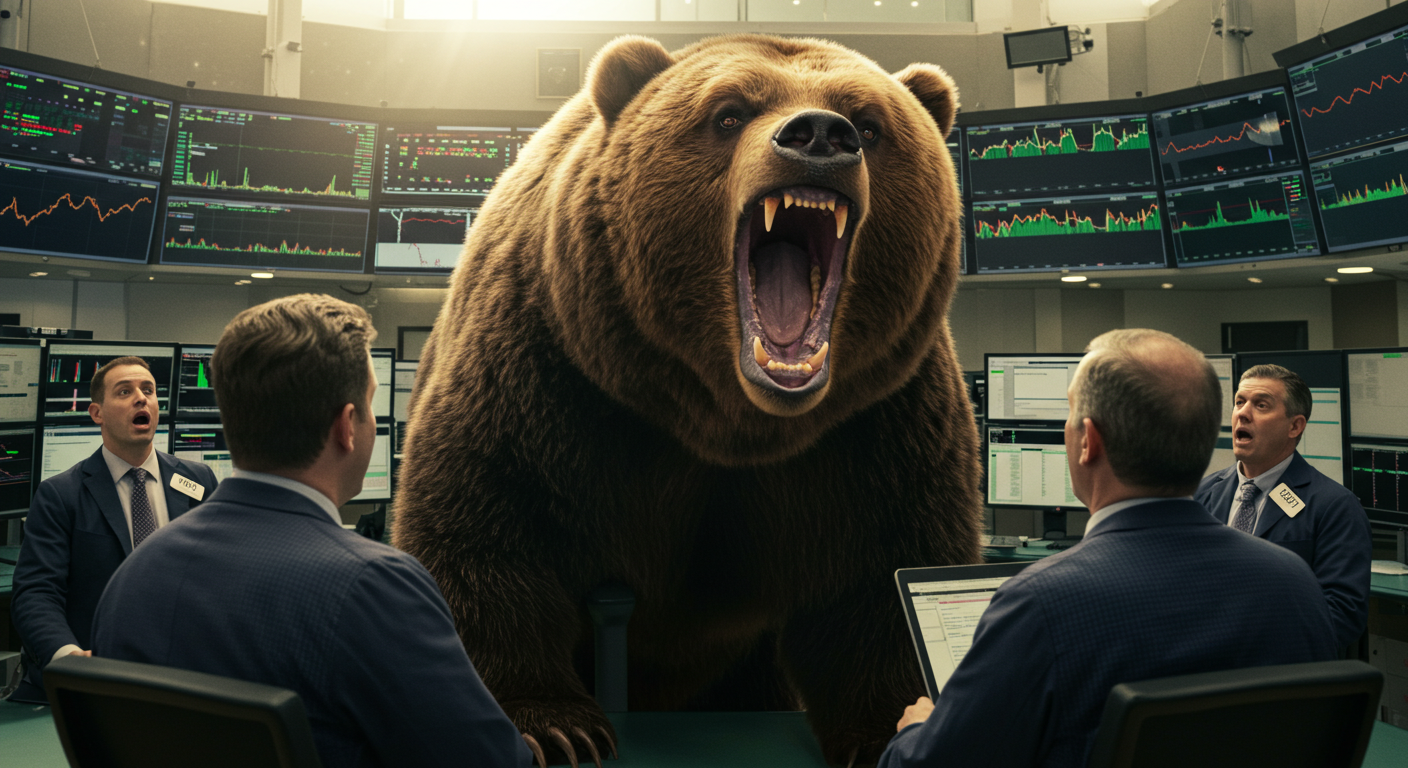“I’ve emphasized repeatedly that this market upswing appears deceptive. It is a bear trap! Exercise caution with this rally, as it displays characteristics of a strategic reversal designed to lure in unsuspecting investors. This pattern is precisely what experienced institutional investors anticipate and position themselves to capitalize on.”
When the S&P 500 dips below the 5,100 threshold, we’re likely to see institutional investors begin deploying their substantial cash reserves. This isn’t merely speculation—it’s a mathematical reality driven by valuation metrics that have historically guided institutional capital allocation decisions.
Current Valuation Context
At current levels, the S&P 500 trades at approximately 21-22 times forward earnings. This represents a significant premium to the historical average P/E ratio of roughly 16-17.
Institutional investors—unlike retail traders who chase momentum—are fundamentally valuation-driven entities with investment committees that require justification for capital deployment.
The 5,100 Inflection Point: The Mathematical Case
Should the S&P 500 decline to 5,100, assuming current earnings projections hold relatively steady, the forward P/E would compress to approximately 18-19. This level begins to approach what institutional investment committees typically classify as the upper bound of “reasonable valuation territory.”
The relevance of this specific level becomes apparent when examining institutional behavior during previous market corrections. Historical data shows that significant institutional buying typically emerges when valuations revert to within 10-15% of long-term averages, precisely where a 5,100 S&P would position the market.
Institutional Psychology and Process
Institutional capital doesn’t deploy without extensive internal justification. Chief Investment Officers must present investment cases to committees, typically including:
- Valuation metrics relative to historical norms.
- Risk/reward calculations at current price levels.
- Opportunity cost analysis against other asset classes.
At 5,100, these calculations begin shifting favorably. Risk/reward ratios improve substantially when starting from a P/E of 18-19 versus 21-22, simply because the downside risk declines while upside potential remains relatively constant.
Historical Precedent as Validation
During the 2018 correction, significant institutional buying emerged when the market P/E compressed to approximately 16.5-17.5. Similarly, following the COVID-induced selloff, institutional buying accelerated dramatically once valuations normalized to historical ranges, despite ongoing uncertainty.
This isn’t coincidental—it reflects the mechanical reality that institutional investment committees typically approve increased equity allocations once valuations reach predetermined thresholds relative to historical averages.
The Self-Fulfilling Dynamic
What makes the 5,100 level particularly noteworthy is its potential to trigger a self-reinforcing cycle. As initial institutional buying stabilizes prices, other institutions—fearful of underperforming peers—face increased pressure to deploy capital. The initial value-based purchases thus potentially catalyze momentum-based purchasing.
Of course, this same pattern has played out repeatedly across market cycles. Institutions that established significant positions at valuation-appropriate levels have historically outperformed those that remained fearful despite attractive valuation metrics.
I suspect many of the same analysts currently justifying excessive valuations with creative narratives will suddenly discover their deep appreciation for “value investing” once prices decline to levels that institutional investors have understood represent reasonable valuations all along.
The Stock Market Could Also Bottom After Fed Rate Cuts
When the Federal Reserve inevitably pivots to cutting interest rates sooner than markets expect, we’ll witness a market bottom form regardless of elevated valuations. This isn’t speculation—it’s financial physics, and it will play out as it always does, despite what the valuation purists continue to insist.
The Mathematical Reality That Always Prevails
The moment the Fed cuts rates, the entire financial ecosystem undergoes a fundamental revaluation that overwhelms traditional valuation concerns.
The present value of future corporate earnings mathematically increases when discounted at lower rates—this isn’t opinion; it’s finance 101. Every discounted cash flow model across Wall Street instantly recalculates to justify higher multiples, exactly as they’ve done in every easing cycle.
Corporate borrowing costs decline, improving profitability forecasts precisely when the market needs them most. The companies that analysts are currently downgrading will suddenly show improved margin projections, forcing upgrades regardless of the broader economic picture.
Fixed income alternatives become progressively less attractive as their yields fall, triggering the TINA effect—”There Is No Alternative” to equities. This capital migration happens with mathematical certainty; it’s not a question of if, but when and how rapidly.
The Psychological Shift That Always Follows
Beyond the math, Fed rate cuts trigger powerful market psychology shifts that have proven effective in every modern market cycle.
Rate cuts signal the Fed prioritizing growth over inflation—a message that reliably triggers risk-taking behavior. This perception alone will overcome valuation concerns, as it has consistently for decades.
Fighting the Fed has been a losing proposition throughout market history. The institutional investors currently sitting on record cash positions know this better than anyone. They’ll deploy capital aggressively at the first clear sign of Fed accommodation, regardless of what their valuation models suggest.
The professional risk for fund managers shifts dramatically once the Fed pivots. Suddenly, being underinvested becomes the career risk rather than being overexposed. This institutional behavior pattern has remained consistent across market cycles for generations.
Historical Precedent Makes This Predictable
Those claiming “this time is different” conveniently ignore the crystal-clear historical record.
The 2001-2003 recovery began precisely when the Fed committed to an easing cycle, despite lingering dot-com valuation concerns that dwarfed today’s supposed “overvaluation.”
In 2009, markets bottomed exactly when the Fed’s commitment to monetary accommodation became unquestionable, despite economic fundamentals that made today’s challenges look trivial by comparison.
The 2019 “Powell Pivot” immediately halted a correction and catalyzed a significant rally despite valuation concerns that the financial media amplified daily, exactly as they’re doing now.
Liquidity Always Trumps Valuation Short-Term
The inconvenient truth that valuation-focused analysts consistently ignore is that liquidity dominates markets in the short and medium term.
Fed-injected liquidity necessarily flows somewhere in the financial system—it doesn’t disappear. A substantial portion will flow into equity markets, creating buying pressure that will overwhelm valuation concerns with mathematical certainty.
The initial liquidity-driven rally will transform market sentiment from fear to optimism, changing the narrative that currently dominates financial media. This psychological shift will sustain advances even as traditional valuation metrics flash warning signs.
Banking systems will expand lending in response to Fed easing, creating a multiplier effect that will amplify the initial liquidity injection. This expanded credit availability will provide additional support for asset prices, exactly as it has in previous cycles.
The Self-Reinforcing Cycle Is Inevitable
Perhaps most predictably, Fed rate cuts will trigger the same self-reinforcing positive cycle we’ve witnessed repeatedly.
Market stabilization will improve consumer confidence, stimulating real economic activity that eventually provides the earnings growth needed to “grow into” today’s valuations, making the current valuation concerns moot in retrospect.
When their cost of capital decreases, corporate executives will regain confidence in pursuing expansion, acquisitions, and capital expenditures. These activities will generate the real economic growth that supports higher valuations, exactly as they have in previous cycles.
The wealth effect from rising asset prices will stimulate additional consumption, creating the positive feedback loop between financial markets and the real economy that has characterized every recovery.
Summary
So, those highly compensated Wall Street analysts are discussing this behind closed doors. They all know it but conveniently fail to admit it once the market starts correcting—caught completely off guard, or shall we say, “with their pants down.” Now you know it. And remember, I told you so.

